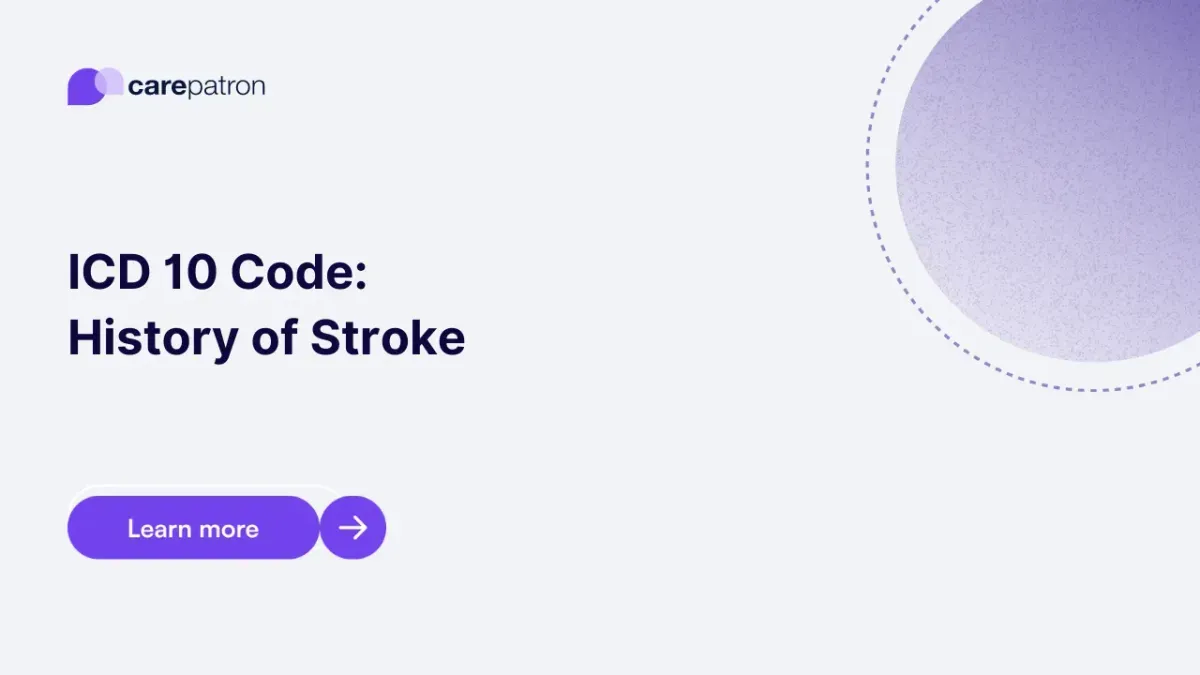
History of Stroke ICD-10-CM Codes
Read this short guide and learn about the history of stroke ICD-10-CM codes you can use.
Use Code
Commonly asked questions
Currently, there are only two ICD-codes used for history of stroke.
You may refer to the symptoms listed above. Watch for drooping on one side or both of the person’s face. Healthcare professionals will conduct neurological exams and imaging tests to confirm this.
That depends on the type of stroke the person has. If it’s ischemic, healthcare professionals will administer thrombolytics and perhaps catheterization to restore circulation in the brain as soon as possible to prevent the stroke from further damaging the brain.
EHR and practice management software
Get started for free
*No credit card required
Free
$0/usd
Unlimited clients
Telehealth
1GB of storage
Client portal text
Automated billing and online payments
